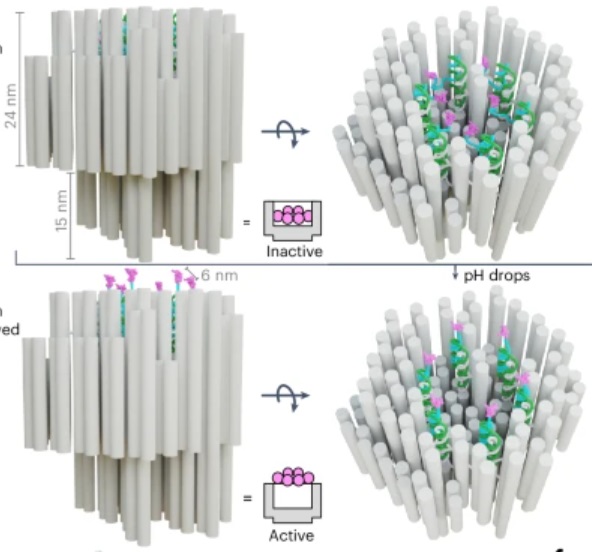Jul 02 2024
DNA Nanorobot Kill Switch for Cancer
 How’s that for a provocative title? But it is technically accurate. The title of the paper in question is: “A DNA robotic switch with regulated autonomous display of cytotoxic ligand nanopatterns.” The study is a proof of concept in an animal model, so we are still years away from a human treatment (if all goes well), but the tech is cool.
How’s that for a provocative title? But it is technically accurate. The title of the paper in question is: “A DNA robotic switch with regulated autonomous display of cytotoxic ligand nanopatterns.” The study is a proof of concept in an animal model, so we are still years away from a human treatment (if all goes well), but the tech is cool.
First we start with what is called “DNA origami”. These are sequences of DNA that fold up into specific shapes. In this case the DNA origami is used to create a nanoscale “robot” which is used as a delivery mechanism for the kill switch. The skill switch is quite literal – a “death receptor” (DR) which is a ligand of 6 amino acids. These exist on all healthy cells, but when sufficiently clustered on the surface of a cell, DRs trigger apoptosis, which is programmed cell death – a death switch.
The DNA origami robot has six such ligands arranged in a hexagonal pattern on the interior of its structure. The DNA, in fact, creates this structure with precise distance and arrangement to effectively trigger apoptosis. When it opens up it reveals these ligands and can attach them to a cell surface, triggering apoptosis. The researchers have managed to create a DNA robot that remains closed in normal body pH, but also will open up in an acidic environment.
If the DR kill switch was just injected into an organism like a drug, it would kill cells indiscriminately. One approach to treating cancer is to find something that is different about cancer cells from healthy cells and then target that cancer-specific feature. The classic feature that is targeted is the fact that cancer cells are rapidly reproducing, so chemotherapy targets all rapidly reproducing cell populations. This is effective but also leads to lots of side effects, like hair loss. Newer techniques are more sophisticated, but based on the same idea – what is different about cancer tissue from healthy tissue?
In this case the researcher are targeting the environment of solid cancer tumors, which tend to be more acidic than healthy tissue. The DNA robots, therefore, should remain closed in healthy tissue, then open up in the acidic environment of a tumor, releasing their hexagons of death. After showing this is what happens in vitro, they studied their nanorobots on mice that were given an analogue of human breast cancer. The treatment reduced the growth of this cancer by up to 70%. This is not bad for a first proof of concept.
The next step is to include on the outside of the DNA robot receptors that are specific for individual tumor types. This way they are not only triggered by the tumor environment, they will specifically seek out the cancer. Unleashing a powerful kill switch into a living organism is obviously a risky proposition, so there will need to be lots of safety testing. The trick will be making the DNA robot as targeted and specific as possible, making sure it leaves healthy tissue alone.
As exciting as this is, we also have to recognize the broader potential of DNA nanorobots more generally in medicine and even outside of medicine. The basic technology of designing and building DNA robots is advancing quickly. They could potentially deliver drugs over time or to specific tissues. They could also be used diagnostically, sensing the presence of disease markers inside the body. Perhaps they could become vectors for gene-editing tools.
Outside of medicine DNA nanorobots could be used in manufacturing at the nanoscale. Basically it’s a platform for building tiny structures, and we are learning how to control the shape and design of those structures.
As always it is difficult to predict what a new cutting edge technology will really take of. It also always seems to take longer than people initially think. Will this be a technology for the 2030s, or perhaps the 2040s? Either way it is very promising, and will likely have a significant role in nanotechnology sometime in the future.
But we are pretty close to the first applications, such as this anticancer kill switch, which could potentially be in use by the end of the decade.






